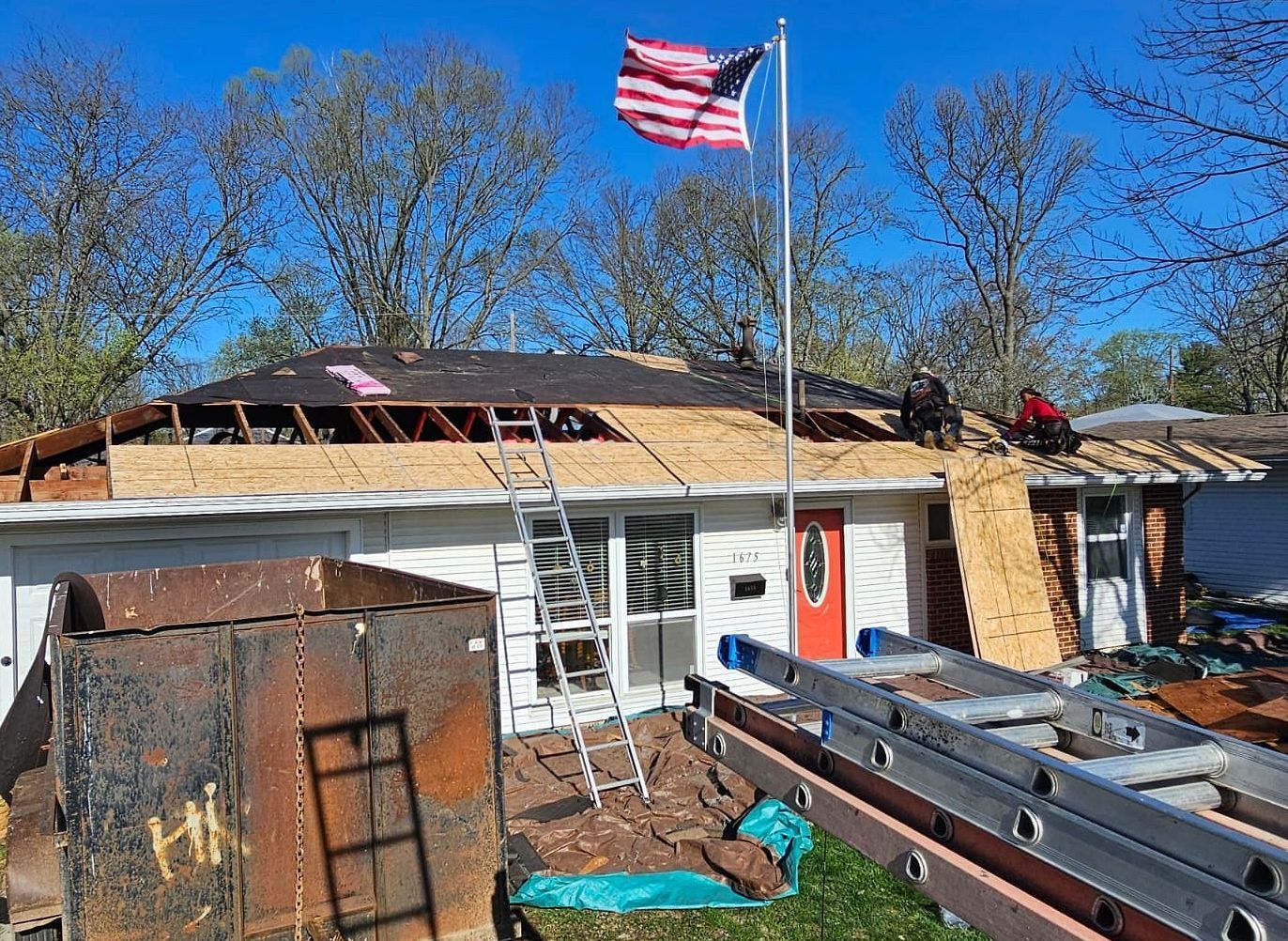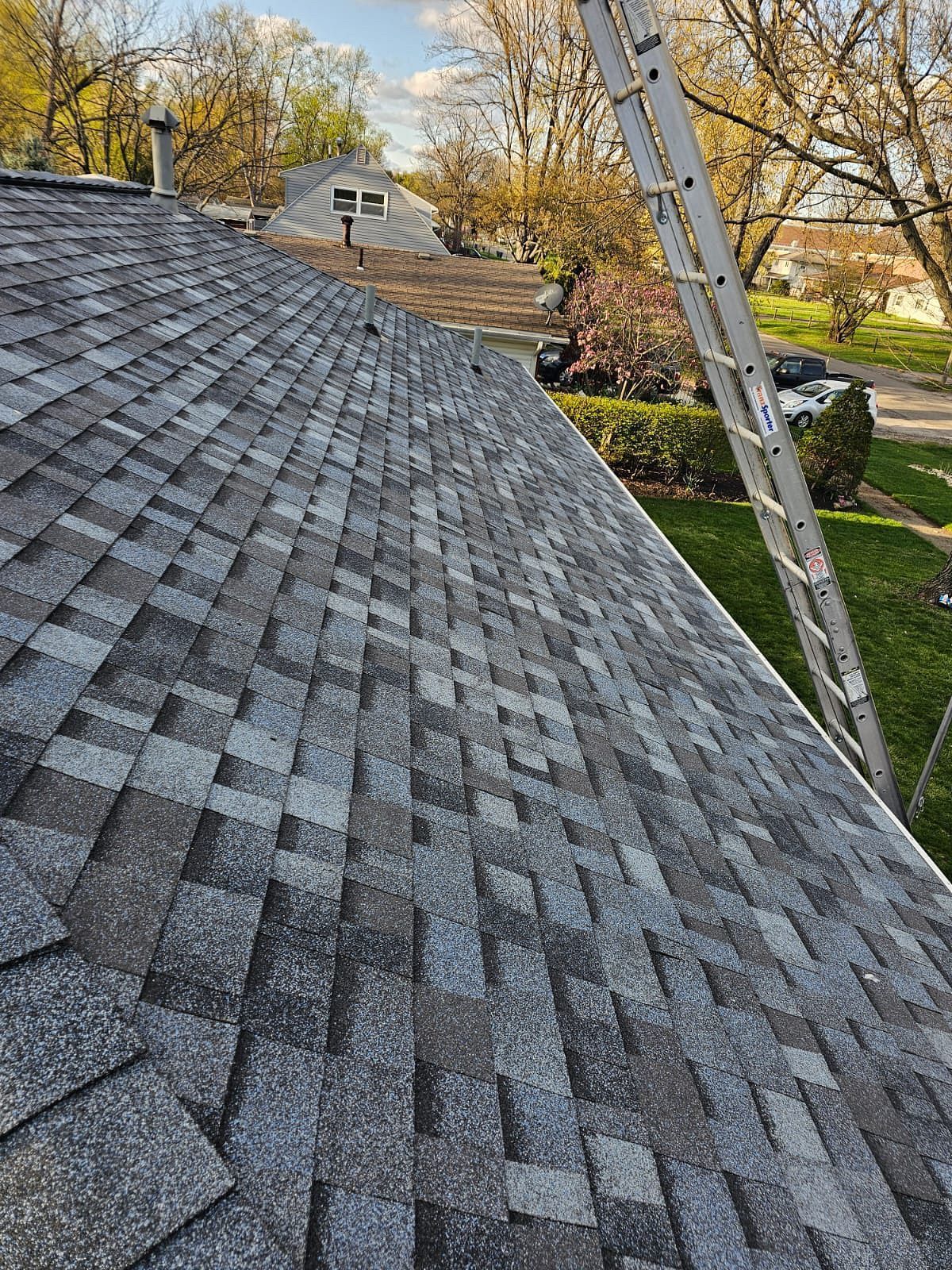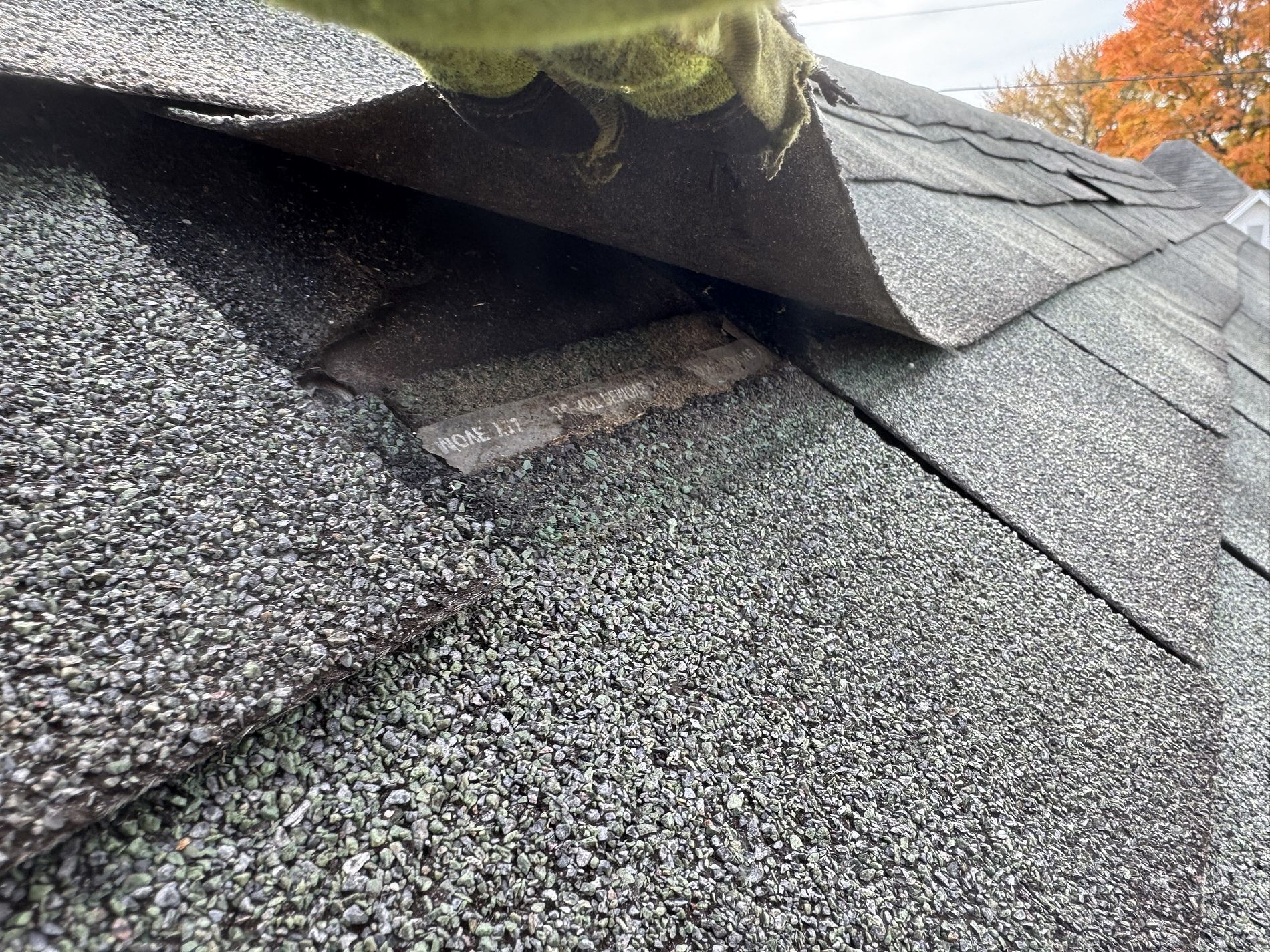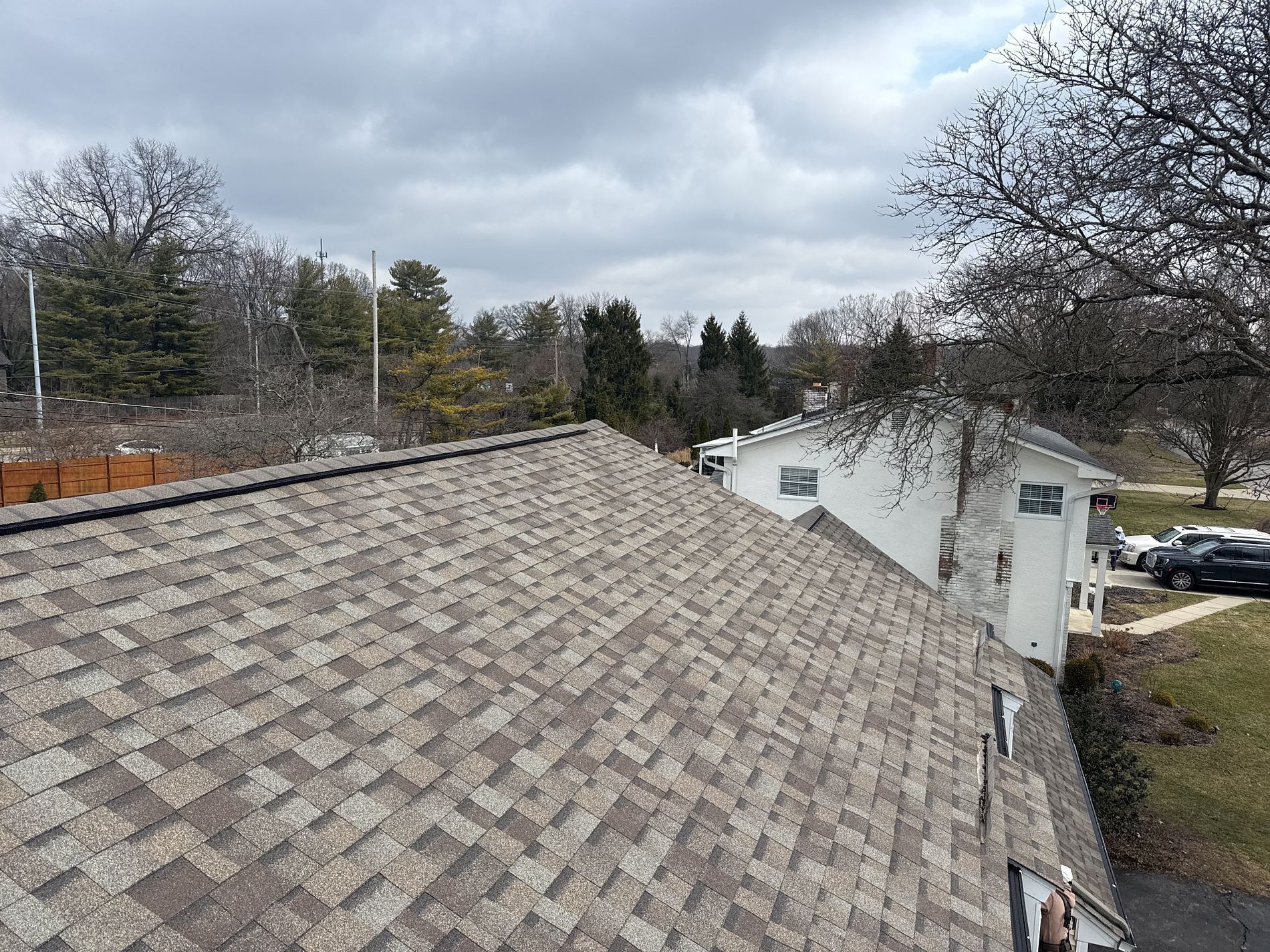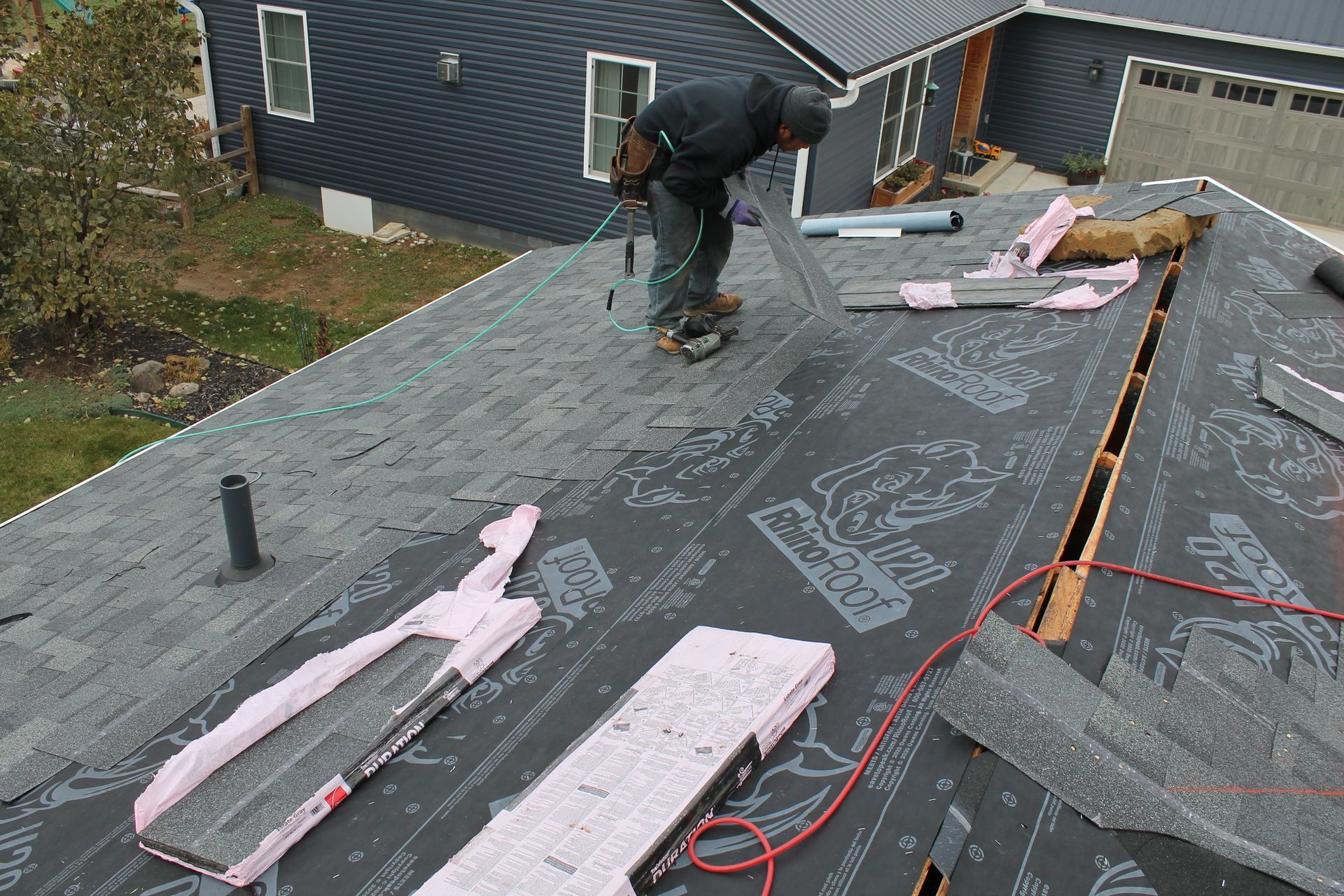Understanding Hail and Its Impact on Roofs
Hail is a common yet destructive weather phenomenon that can cause severe damage to homes, vehicles, and other structures. It occurs when powerful updrafts in thunderstorms carry raindrops into extremely cold areas of the atmosphere, causing them to freeze. As these frozen droplets are repeatedly lifted and coated with additional layers of ice, they grow into hailstones before eventually falling to the ground.
Hailstorms vary in intensity, with hailstones ranging from small pellets to large, golf ball-sized chunks of ice. Roofs, in particular, are vulnerable to hail impacts, which can weaken their structural integrity over time. Understanding how hail forms and recognizing its effects on roofing materials can help homeowners take proactive steps to protect their homes and minimize potential repair costs. Depending on their size and density, hailstones can cause significant damage to roofs and other structures.
Common Types of Hail Damage on Roofing Materials
The extent of hail damage to a roof depends on factors such as hailstone size, wind speed, roofing material, and the roof's condition. Common types of hail damage include:
Asphalt Shingles:
Hail impact can dislodge protective granules from asphalt shingles, exposing the underlying material to UV damage and accelerating wear. Severe impacts may cause bruising, which weakens the shingle structure, leading to cracks, indentations, and potential leaks.
Wood Shingles:
Hail can cause wood shingles to split along the grain, creating sharp, jagged edges. These splits may allow water infiltration, leading to rot and deterioration over time. Additionally, impact marks can compromise the shingle’s structural integrity.
Metal Roofs:
Metal roofing can sustain dents from hail impact, which may not always affect performance but can be unsightly. More severe impacts can chip protective coatings, exposing the metal underneath to moisture and increasing the risk of rust and corrosion.
Tile or Slate Roofs:
Hailstones can cause chips or fractures in tile and slate roofing, compromising their durability. Even small cracks can expand over time due to weather fluctuations, potentially leading to structural weakness and eventual breakage.
Signs of Hail Damage on Your Roof
Indicators of Hail Damage
To detect hail damage, look for:
Dented Gutters and Downspouts:
Metal gutters and downspouts often show signs of hail damage before the roof does.
Damaged Siding and Windowsills:
Check for dents or cracks in siding and window frames.
Roof Vents and Shingles:
Dents, missing granules, cracks, or displaced shingles can indicate hail impact.
Granule Loss:
Shingle granules in your gutters or on the ground signal hail damage and roof wear.
Potential Consequences of Hail Damage
Hail damage can weaken roofing materials, allowing moisture to penetrate. Granule loss exposes the underlying asphalt to UV rays, accelerating roof deterioration and increasing the risk of leaks.
The Importance of Professional Roof Inspections
Benefits of Hiring a Professional Roofing Contractor
While some hail damage is visible from the ground, a thorough inspection requires a trained eye. Professional roofing contractors can safely assess the extent of damage and recommend necessary repairs or replacements.
Recommended Frequency for Roof Inspections
After a severe hailstorm, schedule an inspection immediately. Otherwise, annual inspections help detect damage early and prevent costly repairs.
Steps to Take After Hail Damage Occurs
Immediate Actions to Take After a Hailstorm
Document the Damage:
Take photos of visible damage to your roof, gutters, siding, and windows.
Contact a Professional Roofing Contractor:
A roofing contractor can conduct a full assessment.
Notify Your Insurance Company:
Submit a claim with supporting documentation and inspection reports.
How Roofing Contractors Assist with Insurance Claims
A professional roofing contractor can help by:
Providing a detailed report of the damage.
Meeting with the insurance adjuster to ensure all damages are properly assessed.
Offering repair estimates to streamline the claims process.
Preventative Measures and Maintenance
Factors Affecting Repair Costs
Hail damage repair costs can vary based on several factors, including:
Extent of Damage:
Minor repairs may be inexpensive, while significant damage requiring a full roof replacement will be more costly.
Roofing Material:
Asphalt shingles, metal roofs, and tile roofs have different repair and replacement costs.
Labor and Permits:
Contractor fees and local permit requirements can influence the overall cost.
Insurance Coverage:
Your homeowner’s insurance policy may cover some or all of the repair costs, depending on your coverage and deductible.
Cost-Saving Tips for Hail Damage Repairs
Get Multiple Quotes:
Comparing quotes from different roofing contractors can help you find the best price.
Consider Roofing Upgrades:
If replacing your roof, consider impact-resistant shingles for better future protection.
Work with Your Insurance Company: Understanding your policy and filing claims correctly can help maximize coverage and minimize out-of-pocket expenses.
Ways to Protect Your Roof from Future Hail Damage
Install Impact-Resistant Roofing Materials:
Class 4 impact-resistant shingles withstand hail damage better than standard shingles.
Regular Maintenance:
Keep your roof in good condition to withstand severe weather.
Trim Overhanging Branches:
This prevents branches from falling and damaging the roof during storms.
Warranty Coverage for Hail Damage
Some roofing materials come with hail damage warranties. Always review warranty details to understand your coverage.
Frequently Asked Questions
How do I know if my roof has hail damage?
Look for dents on gutters, missing granules, cracked shingles, or leaks inside your home. If unsure, schedule an inspection with a roofing contractor.
Will my homeowner's insurance cover hail damage?
Most homeowner's insurance policies cover hail damage, but coverage details vary. Review your policy and work with your roofing contractor to file a claim.
How long do I have to file an insurance claim for hail damage?
This depends on your insurance provider. Many policies require claims to be filed within a certain timeframe after the storm, typically 6 to 12 months.
Should I replace my roof after hail damage, or can it be repaired?
It depends on the severity of the damage. Minor damage can often be repaired, but extensive damage may require a full roof replacement.
How can I prevent hail damage in the future?
Consider installing impact-resistant shingles, keeping up with regular roof maintenance, and ensuring proper attic ventilation to prevent premature roof deterioration.
Protect Your Home with Expert Roofing Services in Columbus, Ohio
Hail damage can be tricky to spot and costly to fix if left unaddressed. Even minor hail impacts can compromise the integrity of your roofing system, leading to leaks, mold growth, and structural deterioration over time. Taking immediate action after a hailstorm can save you from expensive repairs down the line.
At Allstate Exteriors, we understand the challenges that come with hail damage. Our experienced team provides comprehensive roof inspections, identifying even the smallest signs of damage that could lead to bigger problems in the future. We specialize in storm damage repair and work closely with insurance companies to streamline the claims process, ensuring you receive the coverage you deserve.
Our expert team specializes in storm damage repair and insurance claim assistance, ensuring your roof remains strong and secure.
